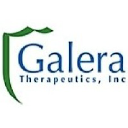Companies
Discover all trending biotech companies
Discover all trending biotech companies

Company Research Platform
Global Employees
30
This segment focuses on the development and commercialization of therapeutics designed to mitigate the side effects of radiotherapy in cancer treatment. The primary focus is on avasopasem manganese (GC4419), a superoxide dismutase mimetic, which is being evaluated in Phase III clinical trials for radiation-induced severe oral mucositis in head and neck cancer patients. Research and development activities include clinical trials across various cancer types, including head and neck cancer, lung cancer, and pancreatic cancer. The technology utilizes small molecule drugs to protect healthy tissues from radiation damage. The goal is to improve patient outcomes by reducing the severity of side effects like mucositis and esophagitis, allowing for higher doses of radiation and improved quality of life. Market positioning is centered on addressing unmet needs in radiation oncology, with a competitive advantage in its targeted approach to reducing radiation-induced toxicities. Future opportunities include expanding the application of GC4419 to other cancers and exploring combination therapies. Regulatory and clinical aspects involve navigating FDA approval processes and conducting rigorous clinical trials to demonstrate efficacy and safety. Partnerships and collaborations are essential for clinical trial execution and commercialization efforts.
This segment encompasses the research, development, and clinical evaluation of novel therapeutic candidates for the treatment of various cancers. The core focus is on developing small molecule dismutase mimetics, such as GC4419 and GC4711, to improve the efficacy and reduce the toxicity of radiotherapy. Research and development activities include preclinical studies, clinical trials (Phase I, II, and III), and the evaluation of these candidates in combination with standard-of-care radiotherapy. The technologies employed involve the use of small molecules designed to target and neutralize reactive oxygen species, thereby protecting healthy tissues from radiation damage. The therapeutic areas covered include head and neck cancer, lung cancer, and pancreatic cancer, with the aim of improving patient outcomes by reducing side effects and enhancing the effectiveness of radiation therapy. Market positioning is focused on addressing the significant unmet needs in radiation oncology, with a competitive advantage in its targeted approach to reducing radiation-induced toxicities. Future opportunities include expanding the application of these therapies to other cancer types and exploring combination therapies. Regulatory and clinical aspects involve navigating the FDA approval process and conducting rigorous clinical trials to demonstrate efficacy and safety. Partnerships and collaborations are crucial for clinical trial execution and commercialization efforts.